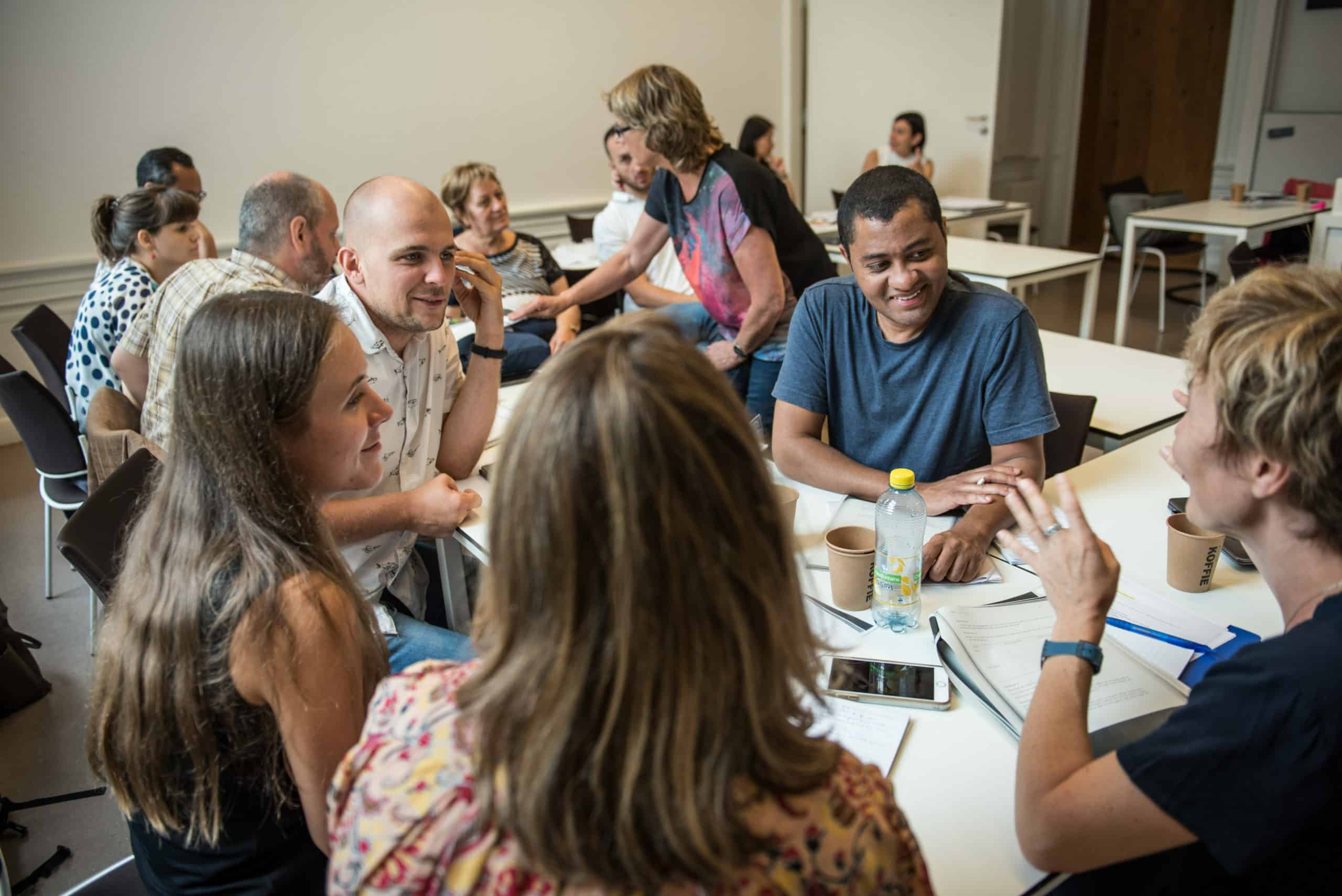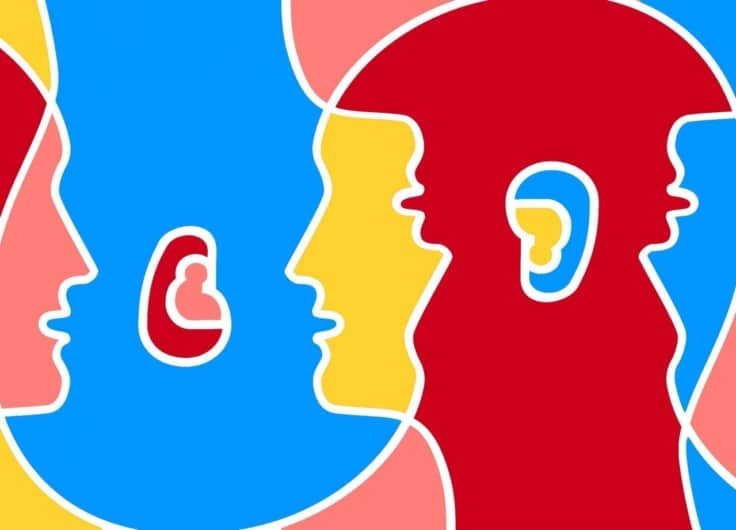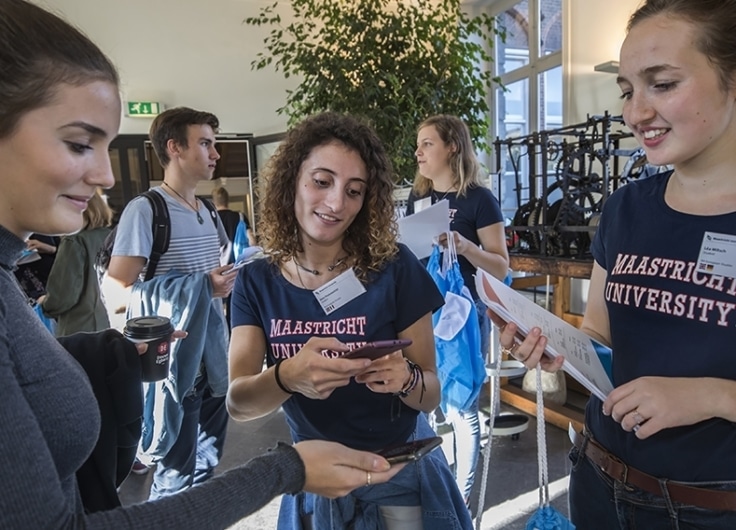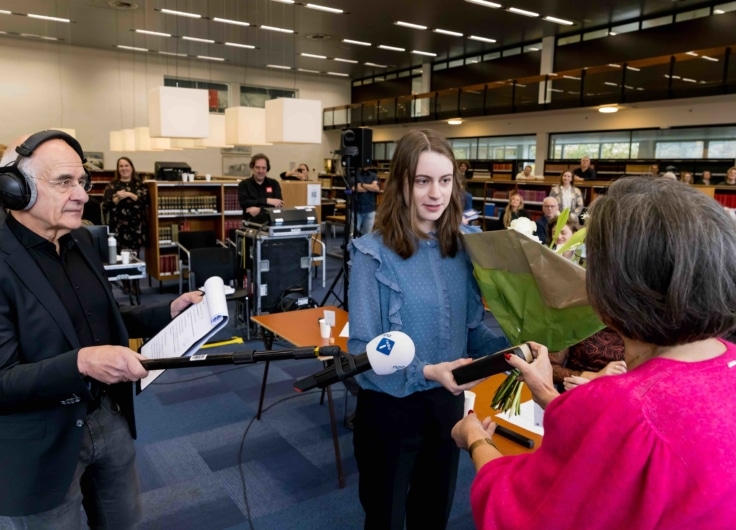A Matter of Awareness: Language Variation in International Dutch Studies
Dutch is a pluricentric language. That raises the question of which variety of Dutch foreign students might be offered. Do teachers of Dutch studies abroad opt for the Dutch or Belgian variety, or for both? What considerations play into that decision? And are their students confused by the variation?
The questions I pose in the introduction were investigated not long ago by Truus De Wilde, Dutch teacher at the Freie Universität Berlin, in Over taalbewustzijn en taalvariatie. Taalideologie bij docenten Nederlands aan Europese universiteiten (On Language Awareness and Language Variation. Language Ideologies of Teachers of Dutch at European Universities). The book was published in 2019 in the series Lage Landen Studies of the Internationale Vereniging voor Neerlandistiek (International Association for Dutch Studies, IVN). Based on interviews with colleagues at European universities, De Wilde distinguishes four groups of teachers. The groups differ in the extent to which the teachers possess knowledge of language variation within Dutch, as well as the extent to which they consider it and act on it in their lessons.
The first group of teachers which De Wilde distinguishes have little knowledge of variation and do not consider the way in which a standard language is constructed. These teachers simply consider all those differences to be awkward for students, and of course, it’s easier to correct and grade assignments to a uniform standard. At most, they might play a song in West Flemish or the Achterhooks dialect, but it’s little more than a nod in the direction. The second group are aware of the existence of different varieties, but do not see that as having consequences for their own teaching practices. On the contrary, they set themselves up as custodians of the standard language (generally Dutch Dutch, “the northern norm”), as they see that as the higher-status language.
The third group are aware of the variation and consider it worthy of attention, but they get stuck. De Wilde terms this archetype “falling short and doubting”. The fourth group of teachers, finally, has a balanced vision of language variation, language change and language ideology and applies that vision to their language acquisition lessons. They offer their students the language, in whichever variety, in a measured manner, at the same time drawing their attention to the way language, with all its variation, functions in a social context. The structure of the book makes it clear that De Wilde’s preference is for the independent manner in which the latter group of teachers approach their language acquisition lessons. The teachers of the first three groups, by contrast, are hampered by factors such as lack of time or some degree of lack of authority.
Teachers speak for themselves
For the purposes of this article, following in the footsteps of De Wilde’s study, I conducted extramural research, surveying a select group of Dutch teachers, who responded by mail or in a Zoom conversation. My sample is certainly not as thorough as De Wilde’s study, but one plus point was that, unlike De Wilde, I was also able to involve Dutch teachers from outside Europe, from Indonesia, the Antilles and South Africa.
The first thing that stands out is that there is often a greater passion for studying Dutch abroad than in the Netherlands and Flanders. Of course, internationally you do find departments with five or six students per year group and around fifty in total, but there are also departments with as many as two hundred or even four hundred students. The enthusiasm, commitment and creativity of their teachers are impressive.
There is often a greater passion for studying Dutch abroad than in the Netherlands and Flanders
At some international universities Dutch is a degree in itself. In others, it is an elective course followed in combination with other subjects, such as another language, art history or politics. It seems obvious that within a “narrow” degree course, in which students exclusively study Dutch, more time can be allocated to varieties of Dutch than in a “broad” degree course, in which students divide their attention between several subjects.
The search for balance
According to the survey respondents, students generally find the idea of the existence of several varieties of Dutch “interesting” or even “exciting”, but they also sometimes find it confusing. Agata Szubert of the University of Wrocław (Poland) is well-placed to comment on this. Until recently there were two separate series of language acquisition lectures, in Dutch Dutch and Belgian Dutch, at her university; students were saddled with the northern and southern standards simultaneously. “That resulted in immense confusion, so we stopped doing it,” says Szubert. “From this year we have been starting out with the standard language according to the northern norm. During their degree, the students will also have a course about Dutch in Flanders.” Szubert’s students are left to decide for themselves whether they opt for the northern or southern standard, on condition that they are consistent. “If they choose the northern variety, they are not allowed to use any southern Dutch words, and vice versa.”
Existing teaching materials don’t make it any easier to offer the two varieties equally, tending to lean towards Dutch Dutch.
Agata Szubert (Wrocław): 'If they choose the northern variety, they are not allowed to use any southern Dutch words, and vice versa.'
In order to avoid confusion, most teachers opt for exclusively offering the Dutch standard for active use of Dutch (speaking and writing). Several teachers even refer to their decision as “logical” (or “self-evident”), because more Dutch speakers live in the Netherlands than in Flanders. When it comes to passive competence (listening and reading) more attention can be paid to variation, for instance with a song, a text or radio or TV clips in Belgian Dutch. As Truus De Wilde indicated, it is not ideal, but according to many teachers, that’s all they can do.
 International teachers of Dutch during a language workshop. In order to avoid confusion, most teachers opt for exclusively offering the Dutch standard for active use of Dutch
International teachers of Dutch during a language workshop. In order to avoid confusion, most teachers opt for exclusively offering the Dutch standard for active use of Dutch© Bart Grietens / Dutch Language Union
A teacher’s own life experience can also influence matters. Someone who comes from the Netherlands or studied there will readily choose the northern variety, and the same goes for Belgium and the southern variety. If a department has teachers from both the Netherlands and Belgium, students can become acquainted with both varieties. For instance, Katja Tereshko of Lomonosov Moscow State University in Russia tells me that their students can choose whether they want to learn the language of their Dutch or Belgian teacher. This requires several students picking a variety, so that they can practise together.
Christine Sas (London): 'I even have a southern Dutch accent, but here I’ve acquired a teaching language full of northern ij- and au- sounds.'
Nevertheless, even some teachers who come from Belgium, such as Gunther De Vogelaer of the University of Münster in Germany and Christine Sas of University College London in the UK, seem resigned to the idea that students benefit more from the northern variety. “I even have a southern Dutch accent,” Sas laughs, “but here I’ve acquired a teaching language full of northern ij-
and au- sounds.”
The careers perspective
When it comes to literature, culture and history, it seems a little easier to provide a balanced offering. Franco Paris of the Università degli Studi di Napoli l’Orientale in Italy emphasises the fact that his department does all it can “to avoid only paying attention to the culture of the one country”. For that reason, they regularly invite writers and artists from both countries.
The decision as to whether or not to offer different varieties, and if so which, often also depends on the question of what the students plan to do after their degree. In Germany, many students roll on into teaching, in Italy tourism and the hospitality sector beckon, and in Poland, there are opportunities in big multinationals. Other professions frequently mentioned include translator, journalist, copywriter, diplomat, archivist and librarian. In the face of professional practice, knowledge of philology – let alone the difference between a northern and southern variety – often disappears into the background. Students from European countries sometimes appear to have a preference for the Netherlands or Belgium, but for students from distant South Africa, the border between the two countries seems a negligible difference. “You can never know where a student will end up,” Agata Szubert (Poland) notes, “so we work on the assumption that a student of Dutch in Europe should be familiar with both the Netherlands and Flanders.”
Achmad Sunjayadi (Jakarta): 'Indonesia has 715 languages. So it’s not surprising to our students that there is variation in Dutch'
In some countries the notion of pluricentrism fits into the local linguistic situation. Angelique van Niekerk of the Universiteit van die Vrystaat in Bloemfontein (South Africa) points to the variation within Afrikaans (such as Kaaps), Christine Sas to variation in English which coincides with class differences in British society, and Eric Mijts of the Universiteit van Aruba to the two different standard dialects of Papiamento: the Papiamento of Aruba and the Papiamentu of Curaçao and Bonaire. Achmad Sunjayadi of the Universitas Indonesia in Jakarta tops it all though. Indonesia has seven hundred and fifteen languages, he reports, and that’s not even counting dialects or sub-dialects. The highest number of languages can be found in the province of Papua, with as many as four hundred and twenty-eight. On Java and Bali, there are ten. “So it’s not surprising to our students that there is variation in Dutch,” he writes.
With her students in Wrocław during their bachelor’s degree, Agata Szubert is reluctant to go too deep into the comparison of language variation in Polish. At the master’s level, in her view, it’s a different story. “When we talk about interpreting and translating, we draw the students’ attention to regional differences in Polish. When you translate, you need a finely nuanced command of not only the source language but also the target language.”
Language in context
In general, the teachers who collaborated on this article seem to fit into De Wilde’s fourth category. Sometimes practical circumstances compel them to make sharp choices. But they are all familiar with the different varieties of Dutch, and they have thought carefully about how and when to raise them in their teaching.
Some language acquisition teachers mention feeling that the conversation as to variation in Dutch belongs more to lectures on linguistics or sociolinguistics. Annika Johansson (Stockholm University), however, considers it important that students are aware of the constructed character of the standard language. “Some of them are still young, and inclined to think in categories,” she says. “They have an opinion on what sounds good or bad, even when it comes to the varieties of a language. But who determines that? That kind of judgement doesn’t arise naturally. It has to do with politics, with nationalism. How do you deal with that as a teacher?”
Annika Johansson (Stockholm): 'It has to do with politics, with nationalism. How do you deal with that as a teacher?'
Christine Sas (UK) appears to feel entirely at home when it comes to language variation, as she is first and foremost a sociolinguist and brings this expertise to her language acquisition lessons. The transfer from theory to practice still happens too seldom, she feels. “Of course there’s a standard language. It has its place; you can’t get around that. But I have a problem with the idea that students learning Dutch at the university level are unable to deal with language variation. I’m not just talking about Belgium versus the Netherlands. From the first lesson – when the students don’t yet speak a word of Dutch – I use a dialogue with four people who introduce themselves, each in a different way. Changes in the register are also language variation. Who are you talking to, how and what about? If you want to be a good language user, you need to be able to use different registers.”
Sas, too, wishes to instil a certain insight in her students. “The language I offer is very securely lodged in standard Dutch. They can use that anywhere. You’re not doing highly educated people any favours offering them a dialect. But I think the awareness that there are different varieties, and that they are completely ok in certain contexts, is extremely important.”








